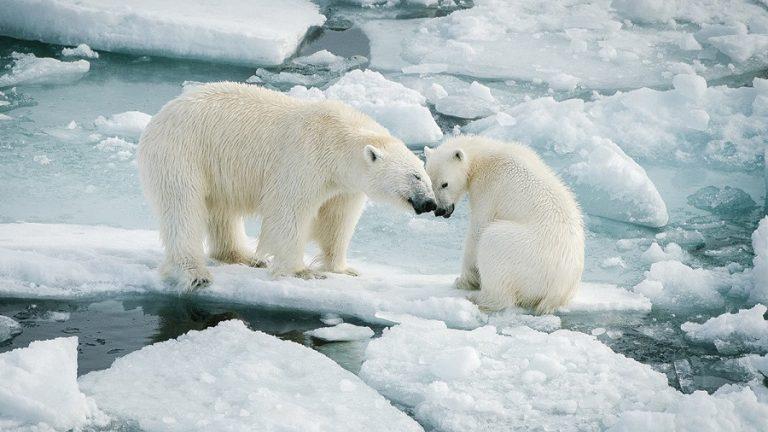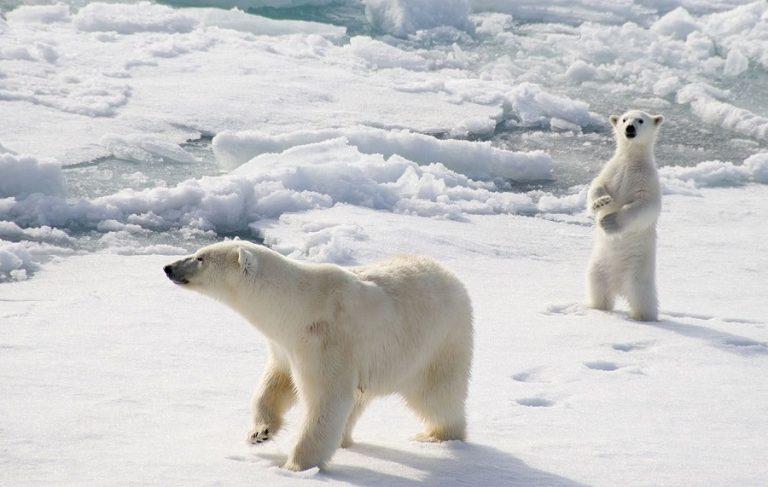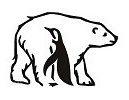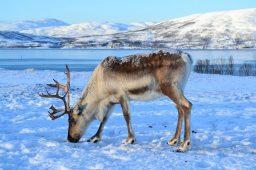
Polar bears. Rosneft PJSC Press Service
Dependence on sea ice makes polar bears extremely vulnerable to climate change, so they need to be studied and protected. In Russia, measures to protect these animals are carried out within the framework of the national Ecology project. Ilya Mordvintsev, Candidate of Biological Sciences, leading researcher at the Severtsov Institute of Ecology and Evolution of the Russian Academy of Sciences, spoke about how animals are accounted for, what they are needed for, and what the role of business is in this.
– What is the main task of new research?
– The project is called “Study and monitoring of the Kara polar bear subpopulation in the context of climate change.” We understand that climate change is really happening and it is stronger in the Arctic than anywhere else. At the same time, about a third of the entire polar bear population lives in the Russian Arctic, it is 5,000-7,000 individuals. Climate change directly affects the polar bear, because its habitat is sea ice, which is currently declining at a catastrophic rate. We need to understand what is really happening, at what speed and how to preserve this view.
– And what is interesting in the Kara Sea? How does it differ from the Barents Sea?
– The Kara Sea is a blind spot, an absolute lack of data. There is no information about how many polar bears there are. No accounting was ever carried out, even in Soviet times there were only passing observations during ice reconnaissance. For the first time in the country’s history, we are going to conduct a total accounting of polar bears in the Kara Sea, determine the population size, see how it is distributed, and identify key water areas to maintain its stable condition.
– In other words, to make a kind of “population census”?
“Not really. When they do a population census, they record many parameters: gender, age, etc. Our main research method is aerial accounting, and there is no way to determine the gender of a bear from an airplane. But if we can finally say with certainty that, say, two or two and a half thousand polar bears live in the Kara Sea, from the point of view of science, this will already be a super result.
– How is the field work going?
– Polar bears are counted from a laboratory aircraft using two methods.
First, the method of visual accounting: scientists with binoculars look out the portholes on the left and right sides and record the number of bears encountered.
Secondly, the method of instrumental accounting. Cameras are installed on board the aircraft to perform photo and thermal imaging. Since each camera has its own shooting angle, they do not capture some part of the visible field. That is why it is important to use all the methods synchronously: they complement each other, allow you to capture the whole picture and not miss anything.
– What is the complexity of the work?
– Our research on the coverage of the territory and the conditions in which they should be conducted is one of the most difficult both technically, logistically, and financially. In addition to the fact that we need to work across the entire Kara Sea area, which is almost 900,000 square kilometers, we need to meet a fairly short period of time. We have to do everything quickly because the ice is moving all the time and the bears are moving all the time.

– So that you don’t count the same bears twice?
– Yes, it is impossible to allow repeated registration of individuals. Another difficulty is that the weather conditions in the Arctic are very variable. Imagine you received a weather report in the morning near the airport, but while you are flying 1000 km north, everything has changed there, and you have no visibility. You have to turn around and leave, and the price of an hour of plane rental is very, very high. In addition, we will use helicopters in parallel with airplanes.
– This is a lot of information, how do you process it?
– Biological samples are studied by specialized specialists during laboratory, analytical and desk studies. But the results of aerial photography on such a huge area are a huge amount of data, which will take several years to process manually. Therefore, for the project in the Kara Sea, we will use algorithms based on neural networks, artificial intelligence. It will help you automatically identify bears in a large number of photos and thermal images. To calculate them accurately and, most importantly, quickly.
– Airplanes, helicopters, thermal imagers, transmitters, artificial intelligence… Is counting polar bears an expensive pleasure?
– Yes, like all jobs in the North. Back in 2020, the Ministry of Natural Resources and Environment approved a roadmap for the conservation and restoration of the polar bear. Rosneft was the first company to join these works, as businesses have more opportunities to finance them, pay for equipment, and attract scientists.
– Why would a business do that?
– There is a practical point. The development trend of the Arctic implies the presence of more and more people in the region every year. This is due to an increase in the number of infrastructure projects and the development of the Northern Sea Route. No wonder they say that the Arctic is our future. However, with climate change, more polar bears are being recorded on land. This is the moment when a man and a bear will inevitably collide. And you need to understand how to act in such meetings. How to create an effective response system, video surveillance, sound alerts, and develop security protocols to protect both humans and animals.
– Who is more dangerous for whom – a bear for a human or a human for a bear?
– There are only three types of animals that are dangerous to humans: a hungry predator, a sick one, and a female protecting cubs. A polar bear that is well-fed, healthy, has the opportunity to hunt and lead its normal lifestyle does not need a human. He will often avoid a person. That is why it is so important to preserve its natural habitat. It is necessary to remember about cleanliness, not to pollute nature, not to dispose of waste, and to store it properly.
– Do you have a dream as a scientist?
– Our dream is to cover the entire Arctic, to work in all polar bear populations, from the Barents Sea to the Chukchi. For us, this is a big mystery that needs to be solved.
Oleg Krutov


